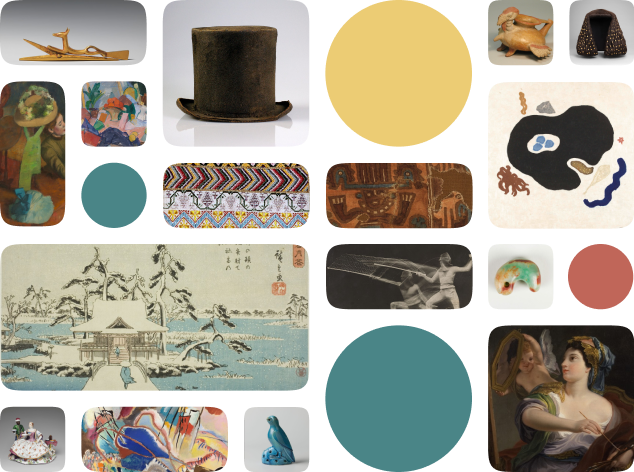Deity face pendant
Creator Name
Cultural Context
Date
Source
About the work
Mesoamerican civilizations crafted many of their headdresses and headbands from a bark paper known as "amatl" or "amate." Mayans used this sturdy paper in their system of recordkeeping. It also provided a medium with which to illustrate the relationship between rulers and gods. The material, like jade, was sacred and considered to be a living being.
Crafted into headbands, or "sakhuuns," the constructions could support the weight of stone pendants. The pendants, or "hu’unals," were hung and attached to them. Ux Yop Hu’n, or "Three Leaves Paper," personifies paper and his image was often worn on the sakhuuns of rulers.
Crafted into headbands, or "sakhuuns," the constructions could support the weight of stone pendants. The pendants, or "hu’unals," were hung and attached to them. Ux Yop Hu’n, or "Three Leaves Paper," personifies paper and his image was often worn on the sakhuuns of rulers.
Metropolitan Museum of Art Object Description
Pendant
Work details
"--" = no data available
Title
Creator
Worktype
Cultural Context
Material
Dimensions
Technique
--
Language
--
Date
Provenance
Style Period
--
Rights
Inscription
--
Location
Source
Subjects
Topic
Curationist Metadata Contributors
All Works in Curationist’s archives can be reproduced and used freely. How to attribute this Work:
Unknown, Deity Face Pendant, 7th–8th century. Metropolitan Museum of Art. Ux Yop Hu’n, or "Three Leaves Paper," personifies amate paper, and pendants with his image were often worn by rulers. Public Domain.
Help us improve this content!
Let our archivists know if you have something to add.
Save this work.
Start an account to add this work to your personal curated collection.
